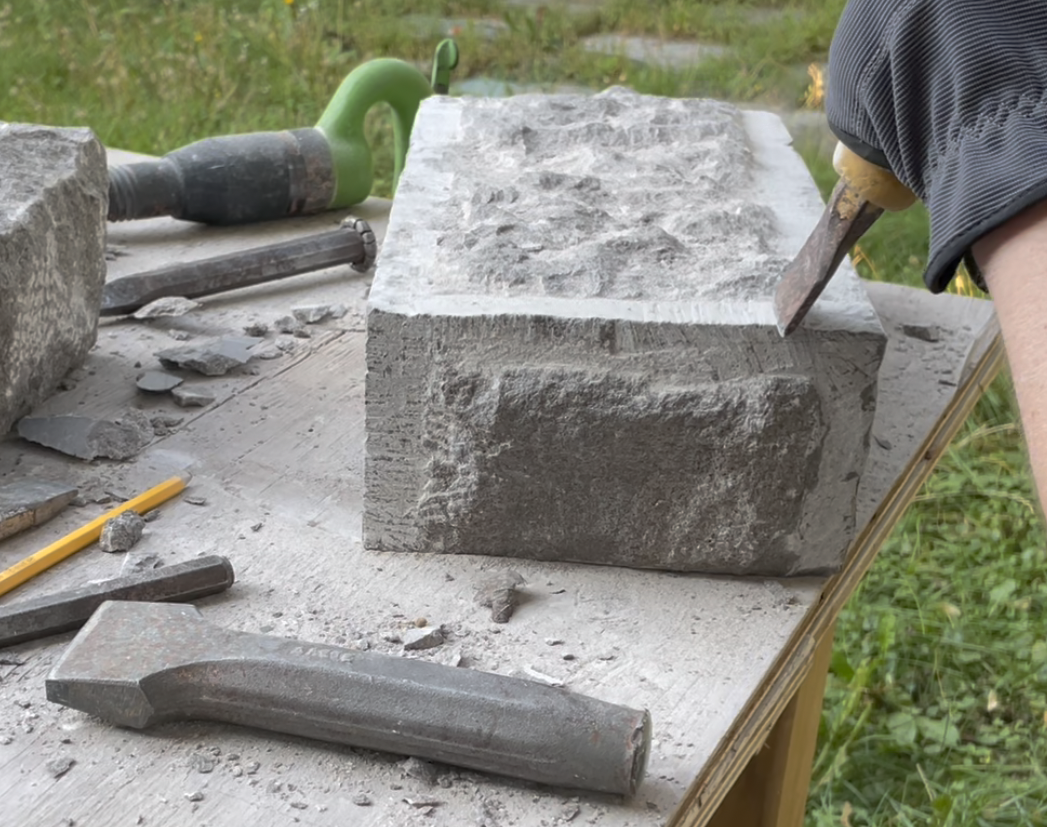Geologic Control: Studies on the Colonial Afterlife of Limestone in Montreal, Quebec Through Artifact

Abstract:
This research traces colonial legacies and settler imaginaries of the present across the urban environment of Montreal, Quebec through a single geologic material: limestone. French settlers extracted limestone upon arrival to Montreal using knowledge of quarrying and stone cutting acquired during construction of the Empire, designating the building material a paradigm of the French territory. They established quarries across the island of Montreal to accumulate wealth for the Empire and to distance the Indigenous population from access to land in the expanding urban condition, which began with the fortification of the merchant port town in the early eighteenth century. As the colony’s population began to grow following the transition from French to British rule in the early nineteenth century, limestone quarrying shifted to an industrial mode of production to expand institutions and maintain the exclusive religious tenure of the Society of Priests of Saint-Sulpice. Limestone aggregate and cement were quarried in Montreal throughout the twentieth century, becoming a symbol of modernity when used to construct Habitat 67’s reinforced concrete walls while reflecting nationalist sentiments during the centennial year of Canadian Confederation.
This thesis explores the evolution of colonialism in Montreal through the making of a series of architectural limestone artifacts: 1) fortification wall footings cut to militarize the port colony in the eighteenth century, 2) basilica ornamentation carved to re-assert Sulpician rule in the nineteenth century, and 3) reinforced concrete walls cast during the growth of industry in the twentieth century. Two additional artifacts reveal the result of this progression within the Empire and the colony: 4) a limestone bas-relief from a hall built for the 1931 Colonial Exhibition in Paris continues to promote resource extraction to serve the French Empire, and 5) limestone quarries in Montreal, documented with archival film, provide evidence of the social and ecological consequences of colonial extractivism. When paired with geological reports, archival documentation, and site observation, a direct engagement with limestone to re-enact the making of the original artifacts allows for reflection on expropriation, human labour, economic exchange, and technological advancement. This thesis concludes with conversations with a contemporary stone carver and a material researcher whose work responds to the extractive colonial history of limestone between the Empire and the colony. I ask: what has the role of limestone been in facilitating colonial nation-building processes in the city of Montreal, and how can limestone’s colonial afterlife inform decolonial material relations in the future?
The
examining
committee
is
as
follows:
Supervisor:
Jane
Mah
Hutton
Committee
member:
Adrian
Blackwell
Internal-external
reader:
David
Fortin
External: Zannah
Matson
The
defence
examination
will
take
place:
Tuesday,
April
11,
2023,
2:00
p.m.
This
will
be
taking
place
in
person
in
the
Riverside
Gallery at
the
School
of
Architecture.
The
committee
has
been
approved
as
authorized
by
the
Graduate
Studies
Committee.
A
copy
of
the
thesis
is
available
for
perusal
in
ARC
2106A.